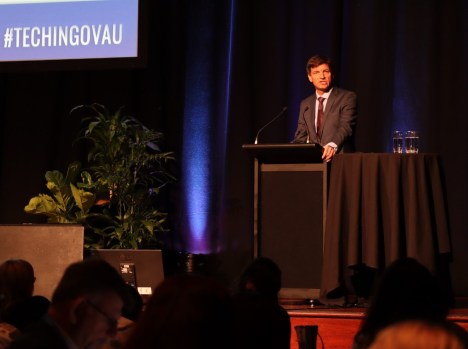Julian Bajkowski
The release of the federal government’s highly anticipated Cyber White Paper is likely to run at least six months late.
National Security Advisor to the Department of Prime Minister and Cabinet, Dr Margot McCarthy, has told the annual Security In Government conference (SIG 2012) in Canberra that the document will now come by the end of this year.
The paper is intended to be a “strategic blueprint” from which to coordinate whole of government cyber security policies and initiatives and had initially been slated for release in the first half of 2012.
The creation of the formal strategy is an attempt by the highest levels of government to create a coordinated response to the increased incidence of orchestrated hacking attempts, many from nation state protagonists.
It comes against the backdrop of the increasing reliance of the economy, government and mainstream society on the internet and information technology.
“The prime minister intends to release a Cyber Policy White Paper this year that will traverse in detail the management of these issues,” Dr McCarthy said.
However a key question that remains is how much any big initiatives recommended in the paper may cost and to which portfolios any new money may be allocated. Assuming there is any.
The task of distilling a central cyber security position for government has not been an easy one given the large number of security agencies, policy portfolios and business interests that feed into the document.
Business and lobby groups have also weighed-in heavily with advice and demands. Submissions PM&C on the Cyber White Paper now total more than 120.
A further problem issue for security agencies has been demarcation between roles and coordination of protective security, intelligence, policing and incident response functions.
A key function of the National Security Advisor is to ensure that security agencies are able to share timely information and have systems that interoperate rather than competing against each other and functioning in relative isolation.
“More fundamentally though, it’s all about information,” Dr McCarthy said. “How to get it, how to keep it, and how to share it.”
Dr McCarthy said that national security agencies had to collaborate to manage risk, including the risks that came with better sharing of information.
“It used to be said that national security agencies were great at producing information and locking it in a bottom drawer,” she said. However approach was visibly flawed after the attacks of September 11 in the US.
Dr McCarthy said the establishment of the role of National Security Chief Information Officer within PM&C, whose task was to advance effective information sharing across the intelligence community had produced improvements.
“Real progress has been made in building this information community, we now have a secret gateway covering all secret networks in the national security community. Connectivity across the secret networks is a reality,” Dr McCarthy said.
But the technological advances had also resulted in users demanding more advanced functionality, like secure desktop video.
Despite the new capabilities Dr McCarthy cautioned that Australia needed to remain a hard target for malicious cyber activity.
Comment below to have your say on this story.
If you have a news story or tip-off, get in touch at editorial@governmentnews.com.au.
Sign up to the Government News newsletter



